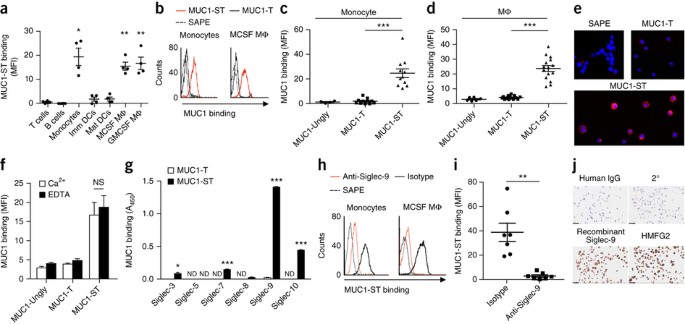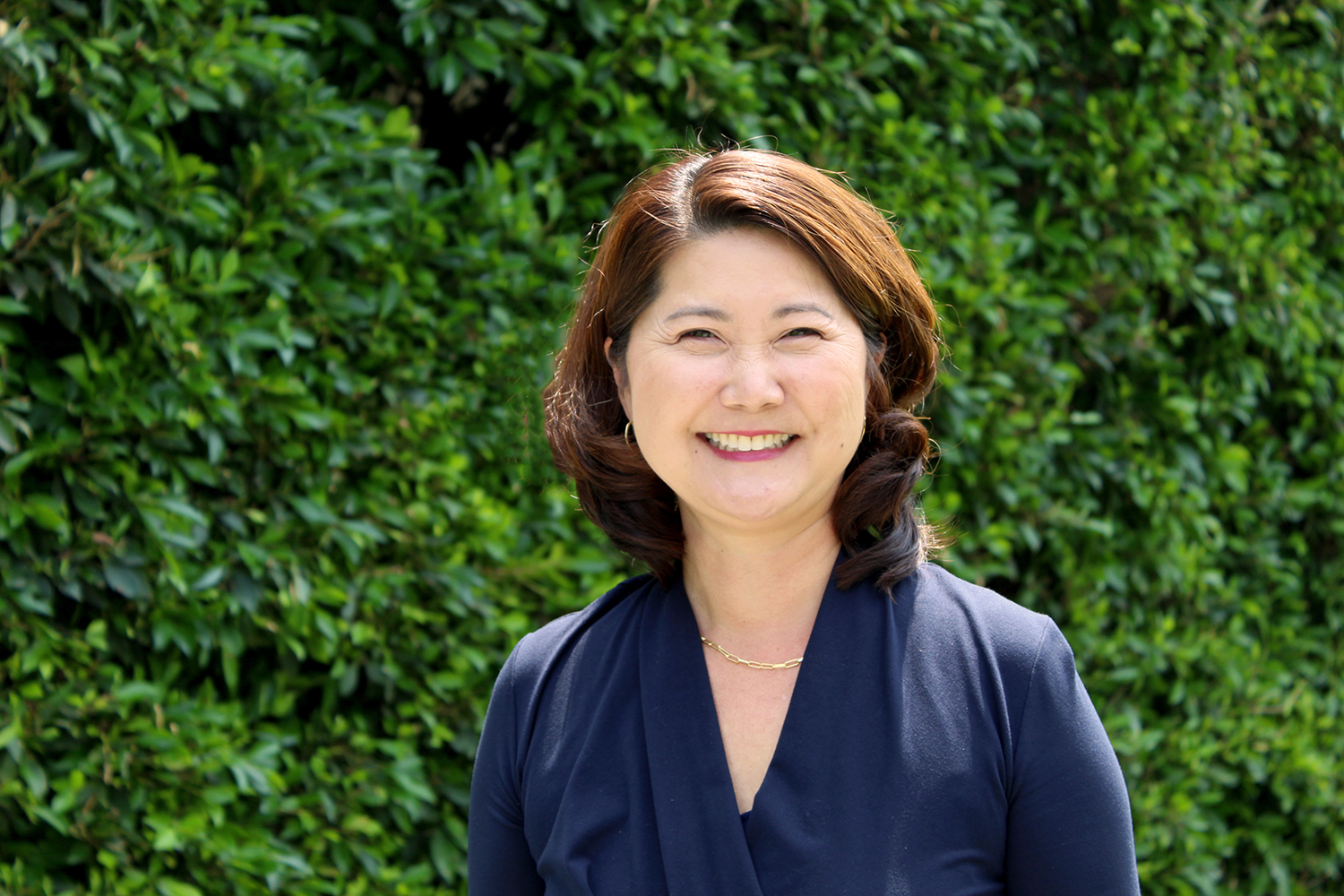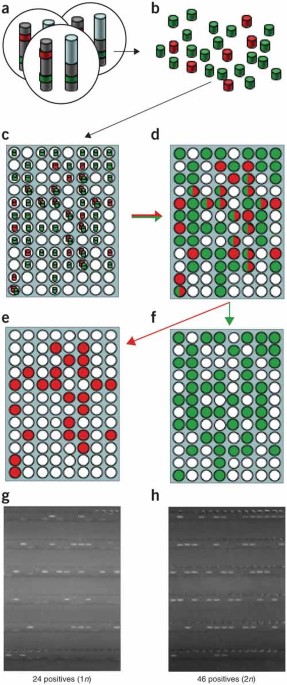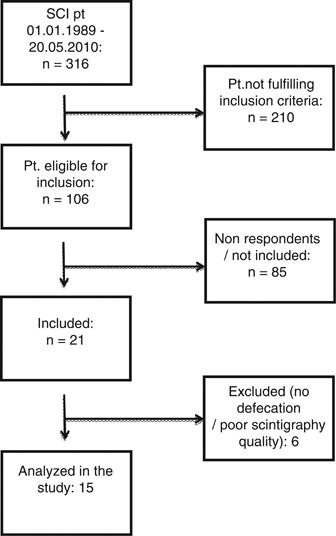
- Select a language for the TTS:
- UK English Female
- UK English Male
- US English Female
- US English Male
- Australian Female
- Australian Male
- Language selected: (auto detect) - EN
Play all audios:
ABSTRACT Siglec-9 is a sialic-acid-binding lectin expressed predominantly on myeloid cells. Aberrant glycosylation occurs in essentially all types of cancers and results in increased
sialylation. Thus, when the mucin MUC1 is expressed on cancer cells, it is decorated by multiple short, sialylated O-linked glycans (MUC1-ST). Here we found that this cancer-specific MUC1
glycoform, through engagement of Siglec-9, ‘educated’ myeloid cells to release factors associated with determination of the tumor microenvironment and disease progression. Moreover, MUC1-ST
induced macrophages to display a tumor-associated macrophage (TAM)-like phenotype, with increased expression of the checkpoint ligand PD-L1. Binding of MUC1-ST to Siglec-9 did not activate
the phosphatases SHP-1 or SHP-2 but, unexpectedly, induced calcium flux that led to activation of the kinases MEK-ERK. This work defines a critical role for aberrantly glycosylated MUC1 and
identifies an activating pathway that follows engagement of Siglec-9. Access through your institution Buy or subscribe This is a preview of subscription content, access via your institution
ACCESS OPTIONS Access through your institution Subscribe to this journal Receive 12 print issues and online access $209.00 per year only $17.42 per issue Learn more Buy this article *
Purchase on SpringerLink * Instant access to full article PDF Buy now Prices may be subject to local taxes which are calculated during checkout ADDITIONAL ACCESS OPTIONS: * Log in * Learn
about institutional subscriptions * Read our FAQs * Contact customer support SIMILAR CONTENT BEING VIEWED BY OTHERS ENGAGEMENT OF SIALYLATED GLYCANS WITH SIGLEC RECEPTORS ON SUPPRESSIVE
MYELOID CELLS INHIBITS ANTICANCER IMMUNITY VIA CCL2 Article Open access 06 March 2024 CANCER-ASSOCIATED HYPERSIALYLATED MUC1 DRIVES THE DIFFERENTIATION OF HUMAN MONOCYTES INTO MACROPHAGES
WITH A PATHOGENIC PHENOTYPE Article Open access 04 November 2020 SIALIC ACIDS IN PANCREATIC CANCER CELLS DRIVE TUMOUR-ASSOCIATED MACROPHAGE DIFFERENTIATION VIA THE SIGLEC RECEPTORS SIGLEC-7
AND SIGLEC-9 Article Open access 24 February 2021 REFERENCES * Quail, D.F. & Joyce, J.A. Microenvironmental regulation of tumor progression and metastasis. _Nat. Med._ 19, 1423–1437
(2013). CAS PubMed PubMed Central Google Scholar * Kitamura, T., Qian, B.Z. & Pollard, J.W. Immune cell promotion of metastasis. _Nat. Rev. Immunol._ 15, 73–86 (2015). CAS PubMed
PubMed Central Google Scholar * Pinho, S.S. & Reis, C.A. Glycosylation in cancer: mechanisms and clinical implications. _Nat. Rev. Cancer_ 15, 540–555 (2015). CAS PubMed Google
Scholar * Burchell, J.M., Mungul, A. & Taylor-Papadimitriou, J. O-linked glycosylation in the mammary gland: changes that occur during malignancy. _J. Mammary Gland Biol. Neoplasia_ 6,
355–364 (2001). CAS PubMed Google Scholar * Gendler, S.J. et al. Molecular cloning and expression of human tumor-associated polymorphic epithelial mucin. _J. Biol. Chem._ 265, 15286–15293
(1990). CAS PubMed Google Scholar * Burchell, J. et al. An alpha2,3 sialyltransferase (ST3Gal I) is elevated in primary breast carcinomas. _Glycobiology_ 9, 1307–1311 (1999). CAS PubMed
Google Scholar * Lloyd, K.O., Burchell, J., Kudryashov, V., Yin, B.W. & Taylor-Papadimitriou, J. Comparison of O-linked carbohydrate chains in MUC-1 mucin from normal breast
epithelial cell lines and breast carcinoma cell lines. Demonstration of simpler and fewer glycan chains in tumor cells. _J. Biol. Chem._ 271, 33325–33334 (1996). CAS PubMed Google Scholar
* Beatson, R. et al. The breast cancer-associated glycorms of MUC1, MUC1-Tn and sialyl-Tn, are expressed in COSMC wild-type cells and bind the C-type lectin MGL. _PLoS One_ 10, e0125994
(2015). PubMed PubMed Central Google Scholar * Mungul, A. et al. Sialylated core 1 based O-linked glycans enhance the growth rate of mammary carcinoma cells in MUC1 transgenic mice. _Int.
J. Oncol._ 25, 937–943 (2004). CAS PubMed Google Scholar * Picco, G. et al. Over-expression of ST3Gal-I promotes mammary tumorigenesis. _Glycobiology_ 20, 1241–1250 (2010). CAS PubMed
PubMed Central Google Scholar * Macauley, M.S., Crocker, P.R. & Paulson, J.C. Siglec-mediated regulation of immune cell function in disease. _Nat. Rev. Immunol._ 14, 653–666 (2014).
CAS PubMed PubMed Central Google Scholar * Avril, T., Floyd, H., Lopez, F., Vivier, E. & Crocker, P.R. The membrane-proximal immunoreceptor tyrosine-based inhibitory motif is
critical for the inhibitory signaling mediated by Siglecs-7 and -9, CD33-related Siglecs expressed on human monocytes and NK cells. _J. Immunol._ 173, 6841–6849 (2004). CAS PubMed Google
Scholar * Crocker, P.R., Paulson, J.C. & Varki, A. Siglecs and their roles in the immune system. _Nat. Rev. Immunol._ 7, 255–266 (2007). CAS PubMed Google Scholar * Jandus, C. et al.
Interactions between Siglec-7/9 receptors and ligands influence NK cell-dependent tumor immunosurveillance. _J. Clin. Invest._ 124, 1810–1820 (2014). CAS PubMed PubMed Central Google
Scholar * Läubli, H. et al. Engagement of myelomonocytic Siglecs by tumor-associated ligands modulates the innate immune response to cancer. _Proc. Natl. Acad. Sci. USA_ 111, 14211–14216
(2014). PubMed PubMed Central Google Scholar * Hudak, J.E., Canham, S.M. & Bertozzi, C.R. Glycocalyx engineering reveals a Siglec-based mechanism for NK cell immunoevasion. _Nat.
Chem. Biol._ 10, 69–75 (2014). CAS PubMed Google Scholar * Tanida, S. et al. Binding of the sialic acid-binding lectin, Siglec-9, to the membrane mucin, MUC1, induces recruitment of
β-catenin and subsequent cell growth. _J. Biol. Chem._ 288, 31842–31852 (2013). CAS PubMed PubMed Central Google Scholar * Bäckström, M. et al. Recombinant MUC1 mucin with a breast
cancer-like O-glycosylation produced in large amounts in Chinese-hamster ovary cells. _Biochem. J._ 376, 677–686 (2003). PubMed PubMed Central Google Scholar * Zhang, J.Q., Nicoll, G.,
Jones, C. & Crocker, P.R. Siglec-9, a novel sialic acid binding member of the immunoglobulin superfamily expressed broadly on human blood leukocytes. _J. Biol. Chem._ 275, 22121–22126
(2000). CAS PubMed Google Scholar * Carlin, A.F. et al. Molecular mimicry of host sialylated glycans allows a bacterial pathogen to engage neutrophil Siglec-9 and dampen the innate immune
response. _Blood_ 113, 3333–3336 (2009). CAS PubMed PubMed Central Google Scholar * Dalziel, M. et al. The relative activities of the C2GnT1 and ST3Gal-I glycosyltransferases determine
O-glycan structure and expression of a tumor-associated epitope on MUC1. _J. Biol. Chem._ 276, 11007–11015 (2001). CAS PubMed Google Scholar * Qian, B.Z. et al. CCL2 recruits inflammatory
monocytes to facilitate breast-tumour metastasis. _Nature_ 475, 222–225 (2011). CAS PubMed PubMed Central Google Scholar * Thapa, B., Koo, B.H., Kim, Y.H., Kwon, H.J. & Kim, D.S.
Plasminogen activator inhibitor-1 regulates infiltration of macrophages into melanoma via phosphorylation of FAK-Tyr925. _Biochem. Biophys. Res. Commun._ 450, 1696–1701 (2014). CAS PubMed
Google Scholar * McMahon, G.A. et al. Plasminogen activator inhibitor-1 regulates tumor growth and angiogenesis. _J. Biol. Chem._ 276, 33964–33968 (2001). CAS PubMed Google Scholar *
Bauerle, K.T. et al. Nuclear factor κB-dependent regulation of angiogenesis, and metastasis in an in vivo model of thyroid cancer is associated with secreted interleukin-8. _J. Clin.
Endocrinol. Metab._ 99, E1436–E1444 (2014). CAS PubMed PubMed Central Google Scholar * Chen, H. et al. Silencing of plasminogen activator inhibitor-1 suppresses colorectal cancer
progression and liver metastasis. _Surgery_ 158, 1704–1713 (2015). PubMed Google Scholar * Thompson, P.A. et al. Environmental immune disruptors, inflammation and cancer risk.
_Carcinogenesis_ 36 (Suppl. 1), S232–S253 (2015). CAS PubMed PubMed Central Google Scholar * Oosterhoff, D. et al. Tumor-mediated inhibition of human dendritic cell differentiation and
function is consistently counteracted by combined p38 MAPK and STAT3 inhibition. _OncoImmunology_ 1, 649–658 (2012). PubMed PubMed Central Google Scholar * Bogdan, C. Nitric oxide
synthase in innate and adaptive immunity: an update. _Trends Immunol._ 36, 161–178 (2015). CAS PubMed Google Scholar * Murray, P.J. et al. Macrophage activation and polarization:
nomenclature and experimental guidelines. _Immunity_ 41, 14–20 (2014). CAS PubMed PubMed Central Google Scholar * Rughetti, A. et al. Recombinant tumor-associated MUC1 glycoprotein
impairs the differentiation and function of dendritic cells. _J. Immunol._ 174, 7764–7772 (2005). CAS PubMed Google Scholar * Allavena, P. & Mantovani, A. Immunology in the clinic
review series; focus on cancer: tumour-associated macrophages: undisputed stars of the inflammatory tumour microenvironment. _Clin. Exp. Immunol._ 167, 195–205 (2012). CAS PubMed PubMed
Central Google Scholar * Forouzandeh, F., Jalili, R.B., Germain, M., Duronio, V. & Ghahary, A. Differential immunosuppressive effect of indoleamine 2,3-dioxygenase (IDO) on primary
human CD4+ and CD8+ T cells. _Mol. Cell. Biochem._ 309, 1–7 (2008). CAS PubMed Google Scholar * Gianchecchi, E., Delfino, D.V. & Fierabracci, A. Recent insights into the role of the
PD-1/PD-L1 pathway in immunological tolerance and autoimmunity. _Autoimmun. Rev._ 12, 1091–1100 (2013). CAS PubMed Google Scholar * Sousa, S. et al. Human breast cancer cells educate
macrophages toward the M2 activation status. _Breast Cancer Res._ 17, 101 (2015). PubMed PubMed Central Google Scholar * Qian, B.Z. & Pollard, J.W. Macrophage diversity enhances tumor
progression and metastasis. _Cell_ 141, 39–51 (2010). CAS PubMed PubMed Central Google Scholar * Paul, S.P., Taylor, L.S., Stansbury, E.K. & McVicar, D.W. Myeloid specific human
CD33 is an inhibitory receptor with differential ITIM function in recruiting the phosphatases SHP-1 and SHP-2. _Blood_ 96, 483–490 (2000). CAS PubMed Google Scholar * Christo, S.N.,
Diener, K.R. & Hayball, J.D. The functional contribution of calcium ion flux heterogeneity in T cells. _Immunol. Cell Biol._ 93, 694–704 (2015). CAS PubMed Google Scholar * Dudley,
D.T., Pang, L., Decker, S.J., Bridges, A.J. & Saltiel, A.R. A synthetic inhibitor of the mitogen-activated protein kinase cascade. _Proc. Natl. Acad. Sci. USA_ 92, 7686–7689 (1995). CAS
PubMed PubMed Central Google Scholar * Xuan, Q.J. et al. Tumor-associated macrophages are correlated with tamoxifen resistance in the postmenopausal breast cancer patients. _Pathol.
Oncol. Res._ 20, 619–624 (2014). CAS PubMed Google Scholar * Noy, R. & Pollard, J.W. Tumor-associated macrophages: from mechanisms to therapy. _Immunity_ 41, 49–61 (2014). CAS PubMed
PubMed Central Google Scholar * Garon, E.B. et al. Pembrolizumab for the treatment of non-small-cell lung cancer. _N. Engl. J. Med._ 372, 2018–2028 (2015). PubMed Google Scholar *
Casey, S.C. et al. MYC regulates the antitumor immune response through CD47 and PD-L1. _Science_ 352, 227–231 (2016). CAS PubMed PubMed Central Google Scholar * Pardoll, D.M. The
blockade of immune checkpoints in cancer immunotherapy. _Nat. Rev. Cancer_ 12, 252–264 (2012). CAS PubMed PubMed Central Google Scholar * Belisle, J.A. et al. Identification of Siglec-9
as the receptor for MUC16 on human NK cells, B cells, and monocytes. _Mol. Cancer_ 9, 118 (2010). PubMed PubMed Central Google Scholar * Ohta, M. et al. Immunomodulation of
monocyte-derived dendritic cells through ligation of tumor-produced mucins to Siglec-9. _Biochem. Biophys. Res. Commun._ 402, 663–669 (2010). CAS PubMed Google Scholar * Correa, I. et al.
Responses of human T cells to peptides flanking the tandem repeat and overlapping the signal sequence of MUC1. _Int. J. Cancer_ 115, 760–768 (2005). CAS PubMed Google Scholar * Priatel,
J.J. et al. The ST3Gal-I sialyltransferase controls CD8+ T lymphocyte homeostasis by modulating O-glycan biosynthesis. _Immunity_ 12, 273–283 (2000). CAS PubMed Google Scholar * Julien,
S. et al. Sialyl-Lewis(x) on P-selectin glycoprotein ligand-1 is regulated during differentiation and maturation of dendritic cells: a mechanism involving the glycosyltransferases C2GnT1 and
ST3Gal I. _J. Immunol._ 179, 5701–5710 (2007). CAS PubMed Google Scholar * Sproviero, D., Julien, S., Burford, B., Taylor-Papadimitriou, J. & Burchell, J.M. Cyclooxygenase-2 enzyme
induces the expression of the α-2,3-sialyltransferase-3 (ST3Gal-I) in breast cancer. _J. Biol. Chem._ 287, 44490–44497 (2012). CAS PubMed PubMed Central Google Scholar Download
references ACKNOWLEDGEMENTS We thank V. Corrigall (King's College London) for tocilizumab; and N. O'Reilly for the lyophilization of samples. Supported by Breast Cancer Now
(2011NovPR-43), the Medical Research Council (MR/J007196/1), the Department the Experimental Cancer Medicine Centre at King's College London, the National Institute for Health Research
Biomedical Research Centre based at Guy's and St Thomas’ NHS Foundation Trust and King's College London. The views expressed are those of the authors and not necessarily those of
the NHS, the National Institute for Health Research or the Department of Health. AUTHOR INFORMATION AUTHORS AND AFFILIATIONS * Division of Cancer Studies, Breast Cancer Biology Group,
King's College London, Guy's Hospital, London, UK Richard Beatson, Virginia Tajadura-Ortega, Gianfranco Picco, Theodora-Dorita Tsourouktsoglou, Matthew Hillier, Joyce
Taylor-Papadimitriou & Joy M Burchell * Division of Cancer Studies, CAR Mechanics Group, King's College London, Guy's Hospital, London, UK Daniela Achkova & John Maher *
Cell Culture Technology Group, University of Bielefeld, Bielefeld, Germany Sandra Klausing & Thomas Noll * School of Life Sciences, University of Dundee, Dundee, UK Paul R Crocker
Authors * Richard Beatson View author publications You can also search for this author inPubMed Google Scholar * Virginia Tajadura-Ortega View author publications You can also search for
this author inPubMed Google Scholar * Daniela Achkova View author publications You can also search for this author inPubMed Google Scholar * Gianfranco Picco View author publications You can
also search for this author inPubMed Google Scholar * Theodora-Dorita Tsourouktsoglou View author publications You can also search for this author inPubMed Google Scholar * Sandra Klausing
View author publications You can also search for this author inPubMed Google Scholar * Matthew Hillier View author publications You can also search for this author inPubMed Google Scholar *
John Maher View author publications You can also search for this author inPubMed Google Scholar * Thomas Noll View author publications You can also search for this author inPubMed Google
Scholar * Paul R Crocker View author publications You can also search for this author inPubMed Google Scholar * Joyce Taylor-Papadimitriou View author publications You can also search for
this author inPubMed Google Scholar * Joy M Burchell View author publications You can also search for this author inPubMed Google Scholar CONTRIBUTIONS R.B. and J.M.B. designed the study and
wrote the manuscript with comments from all authors; R.B. performed the experiments with the assistance of D.A., G.P., T.-D.T. and M.H.; V.T.-O. performed the quantitative RT-PCR; S.K. and
T.N. cultured the Chinese hamster ovary cells in bulk; J.M. and P.R.C. supplied reagents; and J.T.-P. contributed to scientific discussions and approaches. CORRESPONDING AUTHOR
Correspondence to Joy M Burchell. ETHICS DECLARATIONS COMPETING INTERESTS J.M.B. is a consultant to Palleon Pharma, and P.R.C. is a scientific co-founder of Palleon Pharma. INTEGRATED
SUPPLEMENTARY INFORMATION SUPPLEMENTARY FIGURE 1 MUC1-ST BINDS TO SIGLEC-9. (A) Representative flow cytometry histograms showing biotinylated MUC1-T or MUC1-ST binding to isolated or
differentiated immune subsets from healthy donors. N=4 independent donors. (B,C) Monocytes were incubated with biotinylated MUC1-ST for (B) different time periods or (C) using different
concentrations. N=2 independent donors. (D) Monocytes were treated ± neuraminidase before being incubated with 10µg/ml MUC1 glycoforms. N=3 independent donors. (E) Monocytes (N=3) and MCSF
MΦ (N=2) were stained with antibodies to MUC1-ST binding Siglecs and analysed by flow cytometry. (F) Monocytes were treated with indicated concentrations of antibodies to Siglecs-3, 7 and 9
before being incubated with MUC1-ST. Graph illustrates % binding inhibition as calculated against MUC1-ST plus isotype MFI. N=3 independent donors. (G) Representative flow cytometry
histograms showing the binding of MUC1-ST or PAA-ST in the presence of ANTI-SIGLEC-9 or ISOTYPE for both primary monocytes and U937 cells. Data shown are the mean and s.e.m. * p<0.05 **
p<0.01 *** p<0.001, paired or unpaired Student’s t-test where appropriate. SUPPLEMENTARY FIGURE 2 MUC1-ST INDUCES MONOCYTES TO SECRETE FACTORS ASSOCIATED WITH TUMOR PROGRESSION AND
MODULATES THE DIFFERENTIATION OF MONOCYTES INTO DENDRITIC CELLS (MODCS). (A) The supernatant from MUC1-ST educated monocytes was analysed using a protein array. Highlighted factors: 1,
CXCL5, 2, Chitinase 3-like 1, 3 IL-8, 4 CCL3, 5 IL17A, 6 MMP-9, 7 CCL2, 8 PAI-1, 9 IL6, 10 CXCL1. (B,C) Pooled MFI data showing CD40, CD83, HLA-DR and CD86 expression on day 7 immature (B)
or mature (C) moDCs after treatment with MUC1-ST on day 0. N=6 independent donors. (D) Representative flow cytometry histograms showing CD86 expression on day 7 immature or mature moDCs
after treatment with MUC1-ST on day 0 in the presence of ISOTYPE or ANTI SIGLEC-9 or ANTI IL-6RΑ. (E,F,G) Pooled cytometric data showing CD86 (E,F) and CD83 (G) expression on day 7 immature
(E) or mature (F,G) moDCs after treatment with MUC1-ST on day 0 in the presence of isotype or anti-Siglec-9 or anti-IL-6Rα. N=6 independent donors. (H) IL-12 p70 release from day 7 mature
moDCs after treatment with MUC1-ST on day 0 in the presence of isotype or anti-Siglec-9 or anti-IL-6Rα. N= 6 independent donors. Data shown are the mean and s.e.m. * p<0.05 ** p<0.01
*** p<0.001, paired or unpaired Student’s t-test where appropriate. SUPPLEMENTARY FIGURE 3 PROPOSED MODEL OF MUC1-ST-MEDIATED MODULATION OF THE TUMOR MICROENVIRONMENT VIA ENGAGEMENT OF
SIGLEC-9. Transformation associated inflammation induces the expression of MUC1 and COX-2 which in turn upregulates ST3Gal-I49. This increases the presence of MUC1-ST, which via Siglec-9,
educates monocytes and macrophages to release factors involved in immune recruitment and tumor progression. Additionally, Siglec-9 engagement by MUC1-ST on monocytes results in altered
differentiation and a dysfunctional phenotype, and on macrophages induces a TAM-like phenotype with increased expression of CD206, CD163, IDO and PD-L1, and poor CD8+ co-stimulatory ability.
This cycle is maintained by MUC1-ST/Siglec-9 induced factors being able to upregulate ST3Gal-1 and MUC1, thus ensuring conservation of the microenvironment. SUPPLEMENTARY INFORMATION
SUPPLEMENTARY TEXT AND FIGURES Supplementary Figures 1–3 and Supplementary Tables 1 and 2 (PDF 976 kb) SOURCE DATA SOURCE DATA TO FIG. 1 SOURCE DATA TO FIG. 2 SOURCE DATA TO FIG. 3 SOURCE
DATA TO FIG. 4 SOURCE DATA TO FIG. 5 SOURCE DATA TO FIG. 6 RIGHTS AND PERMISSIONS Reprints and permissions ABOUT THIS ARTICLE CITE THIS ARTICLE Beatson, R., Tajadura-Ortega, V., Achkova, D.
_et al._ The mucin MUC1 modulates the tumor immunological microenvironment through engagement of the lectin Siglec-9. _Nat Immunol_ 17, 1273–1281 (2016). https://doi.org/10.1038/ni.3552
Download citation * Received: 28 April 2016 * Accepted: 03 August 2016 * Published: 05 September 2016 * Issue Date: November 2016 * DOI: https://doi.org/10.1038/ni.3552 SHARE THIS ARTICLE
Anyone you share the following link with will be able to read this content: Get shareable link Sorry, a shareable link is not currently available for this article. Copy to clipboard Provided
by the Springer Nature SharedIt content-sharing initiative


![[Withdrawn] Islamic Trust (Maidenhead) - GOV.UK](https://www.gov.uk/assets/static/govuk-opengraph-image-03837e1cec82f217cf32514635a13c879b8c400ae3b1c207c5744411658c7635.png)




